Whenever you use cables in any application, it is necessary that it is protected and routed properly in the required direction. Any improper exposure of cables or wrong direction of wiring can damage the cables.
So, there are many methods through which electrical and instrument cables are routed and covered in a proper manner for use. Two of the most used ones are – conduit and trunking. They are used in almost all the systems of cable applications. In this post, we will see the difference between conduit and trunking.
What is Trunking?
Trunking is a method by which the cables are covered in a rectangular cabinet, whose cover is removable. This allows the engineers to maintain the cables whenever required easily, as the cover is removable.
Refer to the below image for understanding. As you can see, the left-hand side of the long rectangular cabinet houses the cables and is covered by a bracket which can be removed anytime for troubleshooting and maintenance.
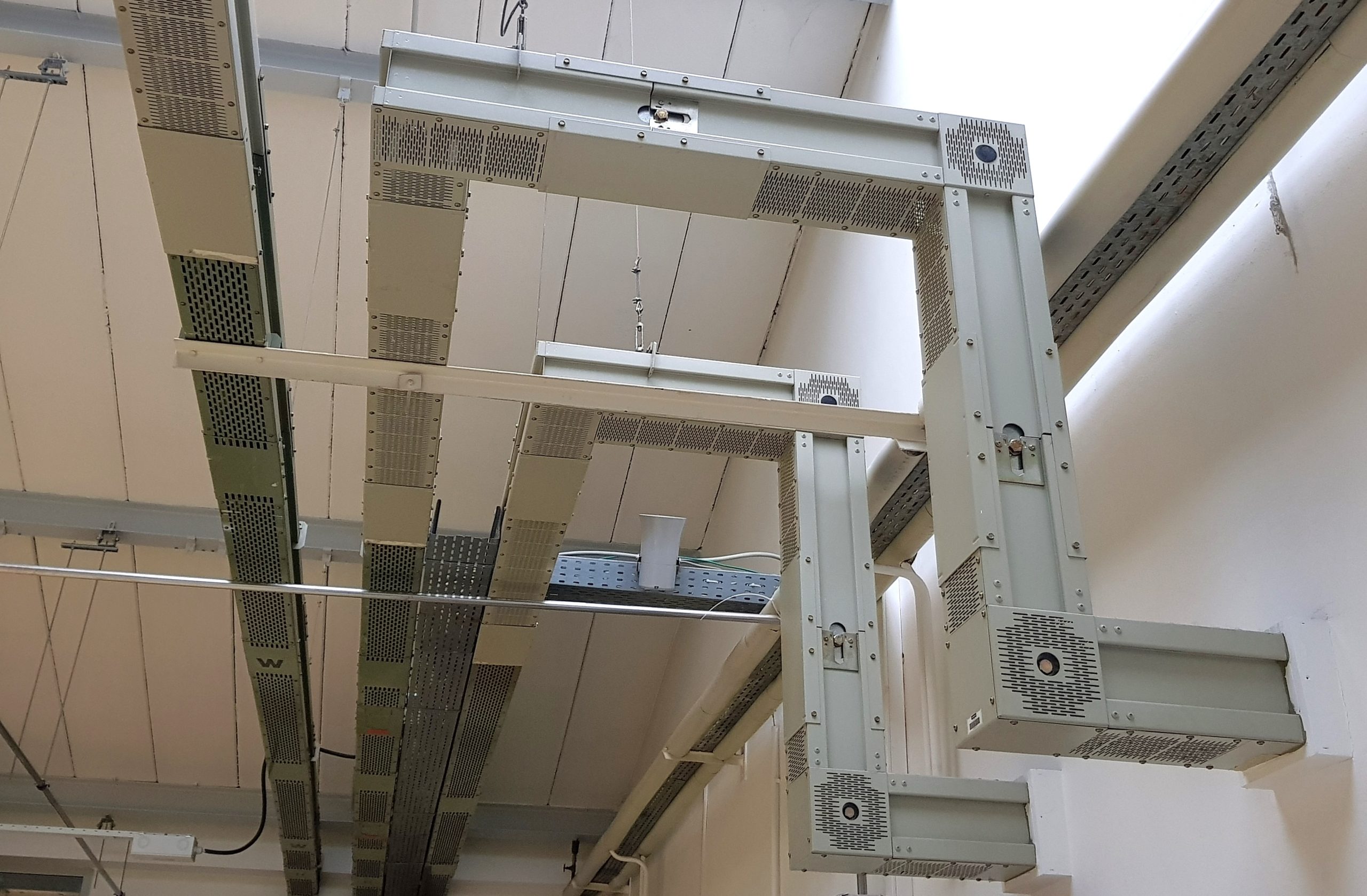
Basically, trunking is best used in systems where frequent maintenance is required and where installation will require constant changes. All the cables are bundled together, routed properly through a trunk, and then distributed wherever required.
The best and simplest example of a trunk system is an electrical PLC panel. You must have seen how the cables inside the panel are routed through a removable bracket trunk, which makes wiring and maintenance easy. Its main focus is thus, to keep multiple cables tidy and easily accessible.
What is Conduit?
A conduit system on the other hand is a type of cable enclosure, where the cables are fully covered inside a closed cabinet and not easily accessible. It is similar to a metal pipe.
The cables are routed and arranged inside a piping-type cabinet, bundled together, and distributed wherever required. Its main job is to fully protect the cables from damage and allow very little access for maintenance.
It means the cables must be installed properly in one go and if any maintenance activity comes, then the user must be prepared for a long downtime period. Refer to the below image for understanding.
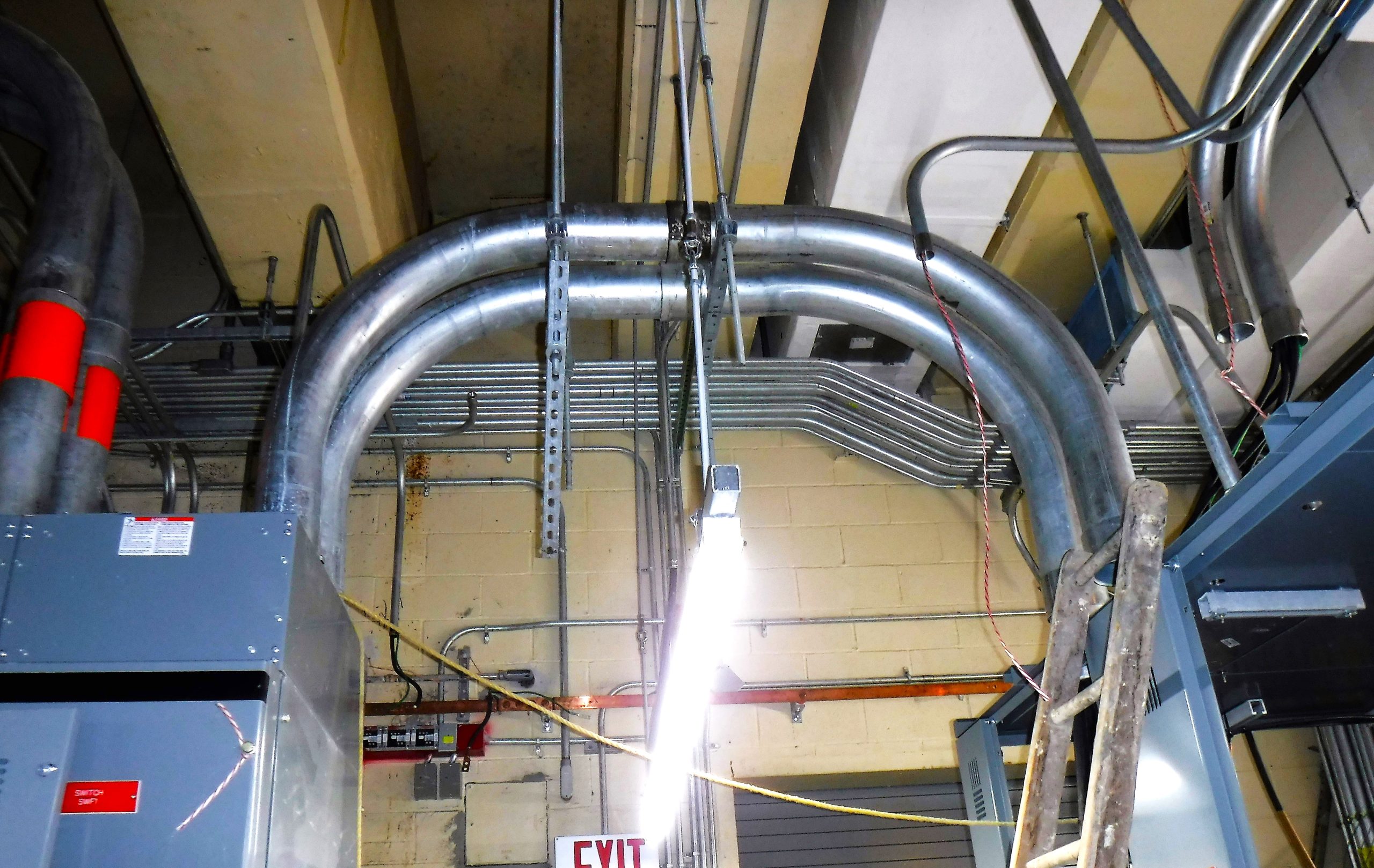
As you can see, a circular pipe section runs in the system, which houses the cables and then carries them wherever required. Conduit is typically made of rigid or flexible metal, PVC, or other durable materials that ensure the protection of the wires inside from external damage.
Difference Between Trunking and Conduit
The main differences between trunking and conduit are mentioned below.
- As discussed earlier, a trunking system allows cabinet frames to be removed and re-install the cables whenever required easily; whereas a conduit system does not allow the cabinet frames to be removed frequently as they are fixed in position.
- Types of trunking systems are – cable, bus bar, lighting, and multi-compartment. Types of conduit systems are – steel, PVC, and stainless steel.
- The reliability and durability of a conduit system are higher than a trunking system.
- The conduit system is ideal for installations in external and damp environments, and hazardous environments. A trunking system is ideal for the distribution of cables in buildings, equipment, and switching yards.
- As trunking is designed for easy accessibility and maintenance, they are not visually appalling. They look messy and cumbersome if not installed properly. Conduit systems on the other hand look visually appalling, as their primary task is to protect cables by fixed enclosures.
In this way, we saw the difference between trunking and conduit cable systems.
If you found this article informative and engaging, we encourage you to consider subscribing to our YouTube Channel, where you can access video tutorials covering topics such as Instrumentation, Electrical, PLC, and SCADA.
For daily updates and to stay connected with our latest content, be sure to follow us on Facebook and Twitter.
To further expand your knowledge, we recommend checking out our next insightful articles.
Read Next:
- Single Core and Multi-Core Cables
- Difference Between HV and LV Cables
- Types of Cables in Industrial Automation
- Instrumentation Cables Testing Steps
- Flame Resistant and Retardant Cables
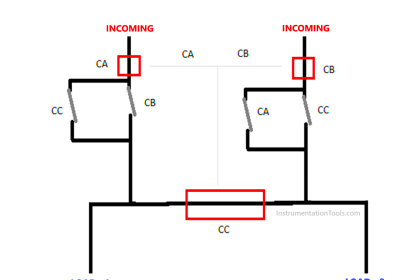
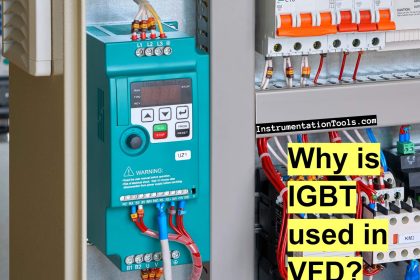
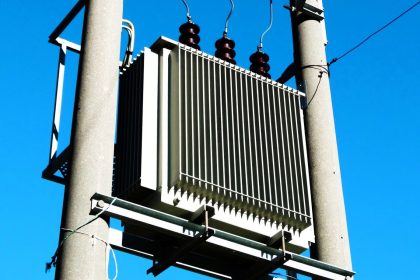
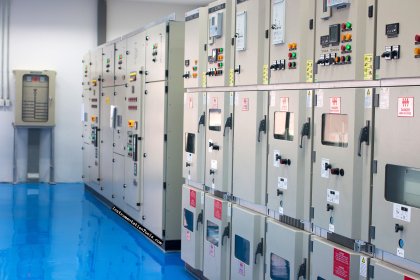

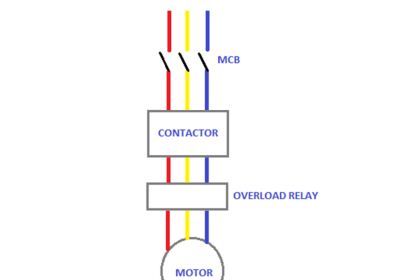
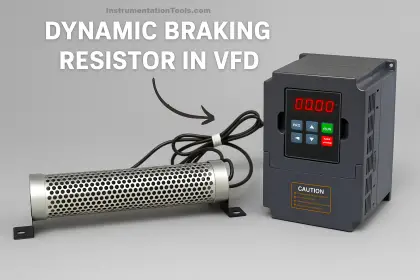
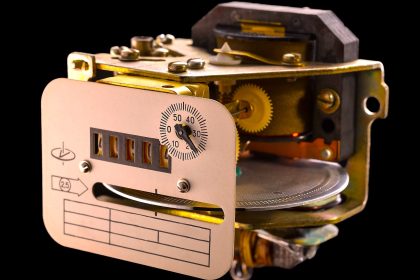

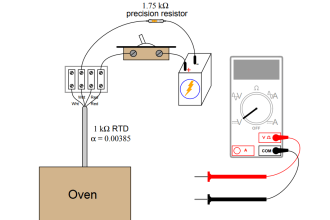
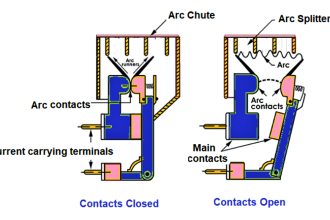
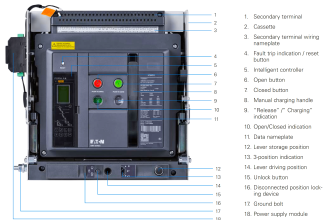
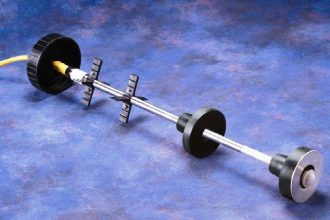
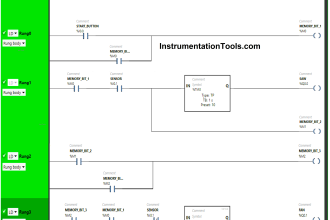

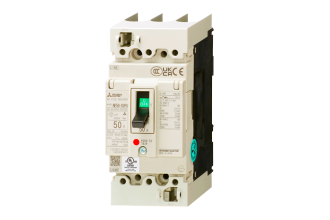

Thinke you vers mutch